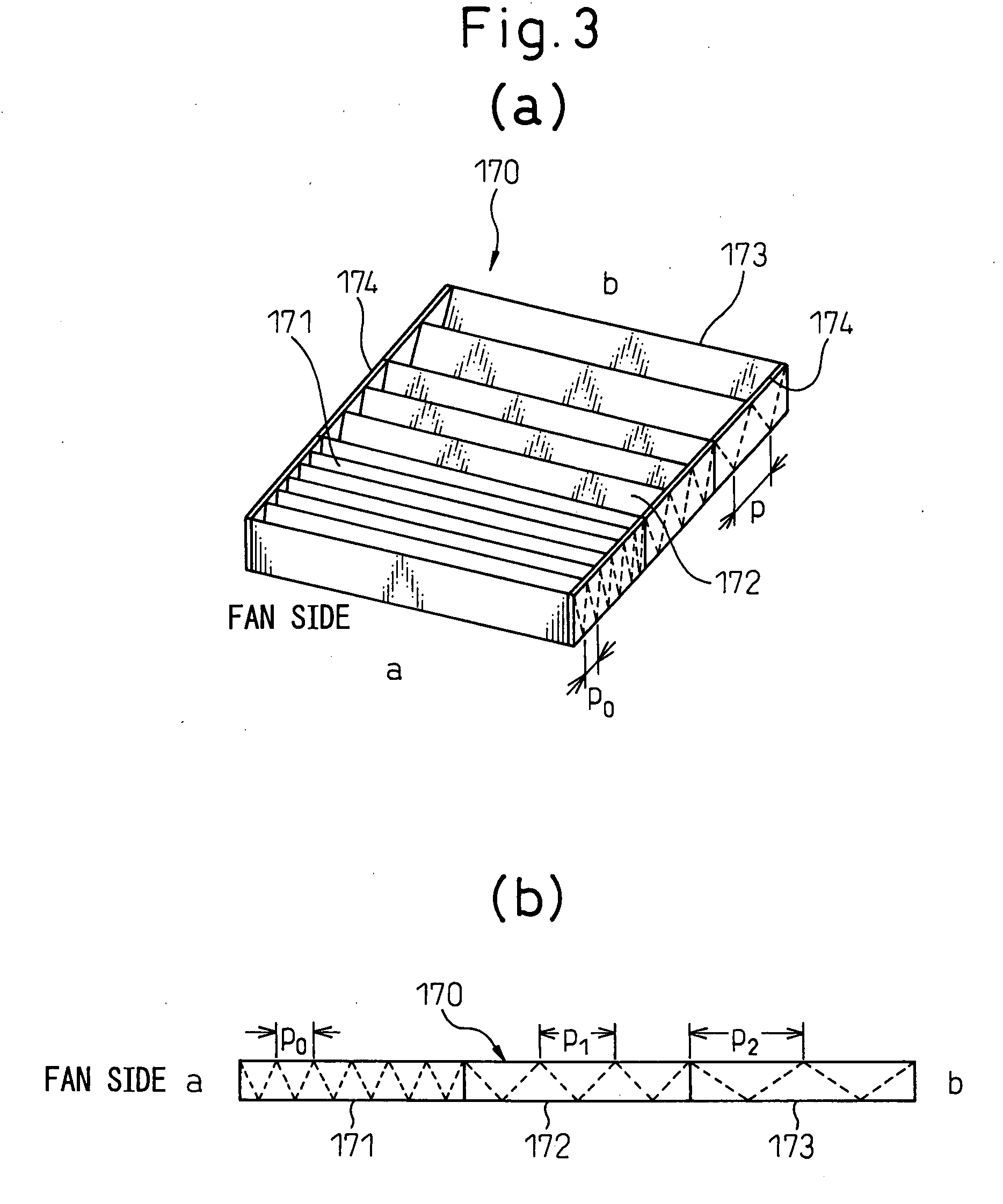Car air conditioner
- Summary
- Abstract
- Description
- Claims
- Application Information
AI Technical Summary
Benefits of technology
Problems solved by technology
Method used
Image
Examples
first embodiment
[0051]FIG. 2 shows characterizing portions of a car air conditioner according to the first embodiment of the present invention, that is, a blower offset HVAC (Heating Ventilating and Air Conditioning) unit. FIG. 3 is a perspective view of a filter of the first embodiment and is its explanatory view.
[0052]The car air conditioner according to the present invention can be broadly divided into a blower unit A and an air conditioning unit B. The blower unit A is arranged at a position that is offset from the center of the instrumental panel (not shown in the drawing) on the front side inside the passenger compartment towards the passenger's seat (towards the left in the transverse direction of the car body in the case of right-hand steering wheel cars). In contrast, the air conditioning unit B is arranged in the center of the instrumental panel on the front side of the passenger compartment.
[0053]The blower unit A includes an internal air / external air switching box (see FIG. 1) for selec...
second embodiment
[0065]FIG. 5 shows a filter according to the second embodiment. In the second embodiment, the filter 170 is constituted by three zones 171, 172 and 173 and the fold pitch P of each zone is gradually changed in three stages in the same way as in the first embodiment. However, whereas the fold pitch P of each zone is greater than the optimal pitch Po at a position spaced further apart from the side of the blower fan 120 in the first embodiment, fold is made at the optimal pitch Po providing the lowest airflow resistance Pa in the first zone 171 in the proximity of the blower fan 120 in this second embodiment. In the second and third zones 172, 173 that are spaced apart from the blower fan 120, the fold pitch P is made smaller to a pitch providing greater airflow resistance ΔP that provides large influences of fluid friction. Incidentally, the number of the zones of the filter 170 is not limited to three and the filter needs only be divided into a plurality of zones.
third embodiment
[0066]FIG. 6 shows a filter according to the third embodiment. In the third embodiment, the filter 170 is constituted of three zones 171, 172 and 173. The tuck weaving pitch P of the first zone 171 in the proximity of the blower fan 120 is set to the optimal pitch Po. In the second zone 172 spaced apart progressively from the blower fan 120, the fold pitch P is greater than the optimal pitch Po and in the third zone 173, the fold pitch P is made smaller than the optimal pitch Po. It is possible in this way to set the fold pitch P to the optimal pitch Po in the first zone 171 closest to the blower fan 120 and to have the fold pitch greater or smaller than the optimal pitch Po in the zones 172 and 173 at positions spaced away from the blower fan 120. In this case, similar functions and effects can be obtained as in the first embodiment.
PUM
| Property | Measurement | Unit |
|---|---|---|
| Angle | aaaaa | aaaaa |
| Mass | aaaaa | aaaaa |
| Electrical resistance | aaaaa | aaaaa |
Abstract
Description
Claims
Application Information
 Login to View More
Login to View More - R&D
- Intellectual Property
- Life Sciences
- Materials
- Tech Scout
- Unparalleled Data Quality
- Higher Quality Content
- 60% Fewer Hallucinations
Browse by: Latest US Patents, China's latest patents, Technical Efficacy Thesaurus, Application Domain, Technology Topic, Popular Technical Reports.
© 2025 PatSnap. All rights reserved.Legal|Privacy policy|Modern Slavery Act Transparency Statement|Sitemap|About US| Contact US: help@patsnap.com



